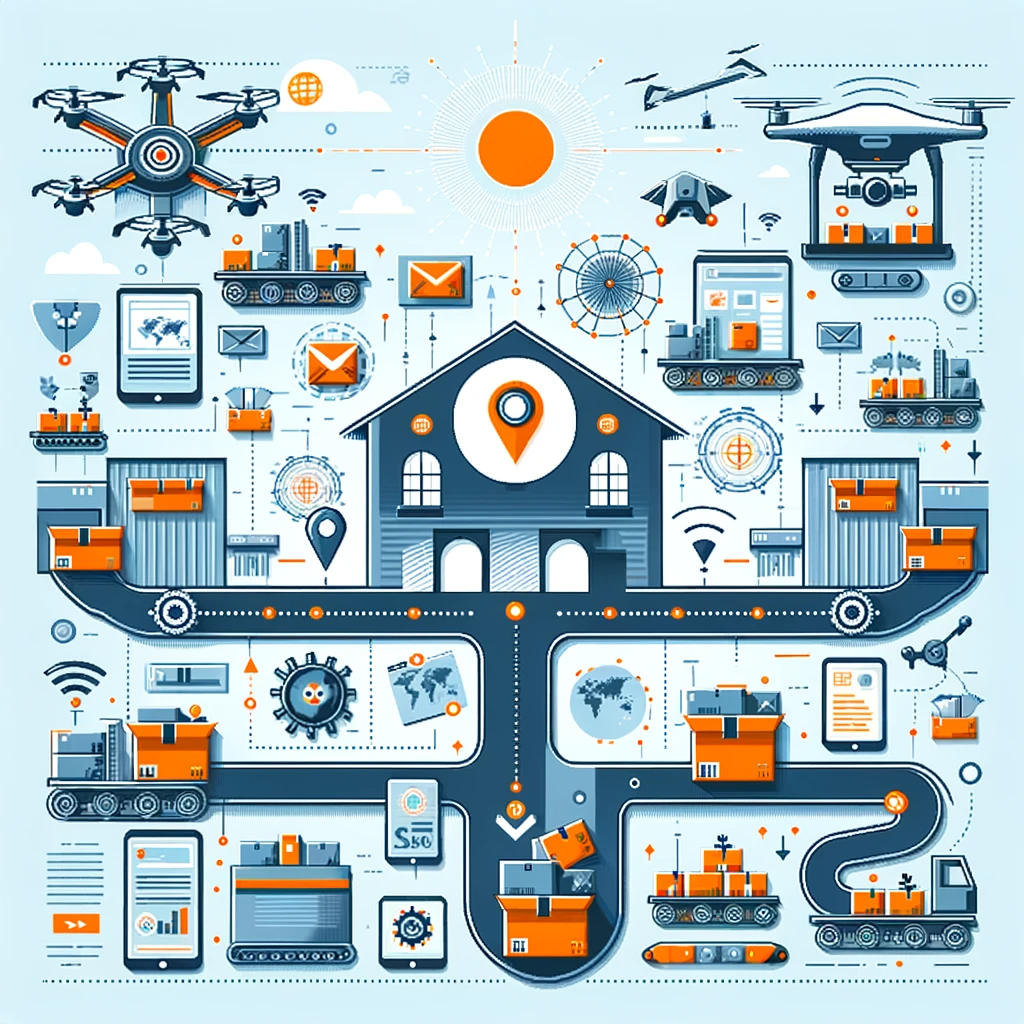Task Automation for Ecommerce: Revolutionizing Business Efficiency and Growth

In the dynamic realm of ecommerce, “Task Automation for Ecommerce” emerges as a pivotal strategy for businesses grappling with challenges such as providing omnichannel experiences and managing complex supply chains. The implementation of task automation in ecommerce is crucial for the efficient handling of time-consuming and repetitive tasks, enabling staff to concentrate on more impactful and creative aspects of the business.
Understanding task automation in ecommerce
Task automation in ecommerce refers to the application of software that automatically executes tasks based on specific triggers, without human intervention. This approach is designed to enhance the efficiency of routine business operations, reduce the likelihood of errors, and free up human resources for tasks that require more complexity and creativity.
For instance, ZenBasket’s ecommerce platform offers a task automation tool with intuitive, low-code functionality. This tool employs a trigger-condition-action system, efficiently automating processes like providing free shipping for orders above a set amount.
Benefits of implementing task automation
The expansion of an ecommerce business often brings increased complexity to workflows. “Task Automation for Ecommerce” helps businesses scale efficiently by offering several benefits:
- Boosted productivity: Automating mundane tasks allows employees to dedicate more time to specialized skills.
- Enhanced accuracy: Automation reduces human error, ensuring critical operations are completed accurately.
- Resolving labor shortages: Automation helps to mitigate talent shortages, especially in areas like warehousing.
- Higher ROI: By extending team capacity and optimizing workflows, automation drives profitability without significantly increasing costs.

Key types of task automation for ecommerce
1. Order management and fulfillment automation:
- Automated order verification: Automatically check and validate each order that comes in, ensuring all necessary information and criteria are met.
- Streamlined shipping process: Automate the movement of ready-to-ship orders to the fulfillment stage, including preparation of draft shipping labels.
- Order flagging and holding: Identify and hold orders that require special attention or verification before they can be shipped.
- Customer update automation: Send automated messages or emails to customers at various stages of the shipping process, keeping them informed about their order status.
2. Inventory management automation:
- Stock level monitoring: Set up alerts to notify when specific items are running low or are out of stock, ensuring timely replenishment.
- Inventory updates: Automatically remove items from the online store when they are out of stock and add them back when new stock arrives.
- Demand monitoring: Track and analyze fluctuations in customer demand to align inventory orders accordingly, helping in avoiding overstocking or stock-outs.
- Supplier-to-warehouse streamlining: Enhance the efficiency of the ordering process and improve the flow of inventory from suppliers to your warehouse.
3. Automated customer support:
- Automated communications: Send automated confirmations, receipts, and shipping notifications to customers after they make a purchase.
- Wishlist notifications: Notify customers automatically when items on their wishlist are back in stock.
- Personalized customer interaction: Trigger alerts for staff to engage personally with customers based on specific criteria like lifetime value or complexity of inquiries.
- Chatbots for FAQs: Implement chatbots to instantly respond to frequently asked questions and order-related inquiries.
4. Customer retention through automation:
- Post-purchase campaigns: Start automated marketing campaigns following a purchase to encourage repeat business.
- Customer segmentation and tagging: Use automation to tag customers for segmentation, aiding in tailored marketing and outreach strategies.
- Creation of ideal customer profiles: Automate the process of generating customer profiles to inform targeted advertising and outreach.
- Loyalty points and perks: Automatically award points and perks for customer actions like purchases and product reviews.
- Targeted discounts and incentives: Offer customized discounts and incentives to customers with high lifetime values or those showing loyalty to the brand.

Task automation for ecommerce: FAQs
Q1: What are some real-world applications of task automation in ecommerce?
- Automated shipping notifications: Customers receive updates automatically when their order is processed, shipped, and out for delivery.
- Loyalty points management: Automatically apply loyalty points or credits to customer accounts based on their purchases.
- Stock level alerts: Automated notifications to management when inventory levels of certain products are low or depleted.
- Order processing: Automatic validation and processing of customer orders, including the generation of shipping labels and invoices.
Q2: How does task automation impact customer service in ecommerce?
Task automation significantly streamlines customer service by handling routine inquiries and updates efficiently. However, it’s crucial to maintain a balance with human customer service for complex issues or personalized interactions. This balance ensures that while automation handles the bulk of repetitive tasks, the human touch is available for nuanced or sensitive customer needs.
Q3: Is there a risk of over-automating in ecommerce?
While automation brings numerous benefits, over-reliance on it can lead to a lack of personalization and potential customer disconnect. Ecommerce businesses should aim to automate repetitive and time-consuming tasks while preserving human judgment and intervention for areas that require a more personalized approach.
Q4: Can task automation adapt to changes in business scale or customer behavior?
Yes, modern task automation systems are designed to be scalable and flexible. They can adapt to increasing order volumes, changes in customer buying patterns, and evolving business needs. Regular updates and integrations with other systems ensure that automation remains relevant and efficient as the business grows.
Centizen
A Leading IT Staffing, Custom Software and SaaS Product Development company founded in 2003. We offer a wide range of scalable, innovative IT Staffing and Software Development Solutions.
Contact Us
USA: +1 (971) 420-1700
Canada: +1 (971) 420-1700
India: +91 63807-80156
Email: contact@centizen.com
Our Services
Products
Contact Us
USA: +1 (971) 420-1700
Canada: +1 (971) 420-1700
India: +91 63807-80156
Email: contact@centizen.com






